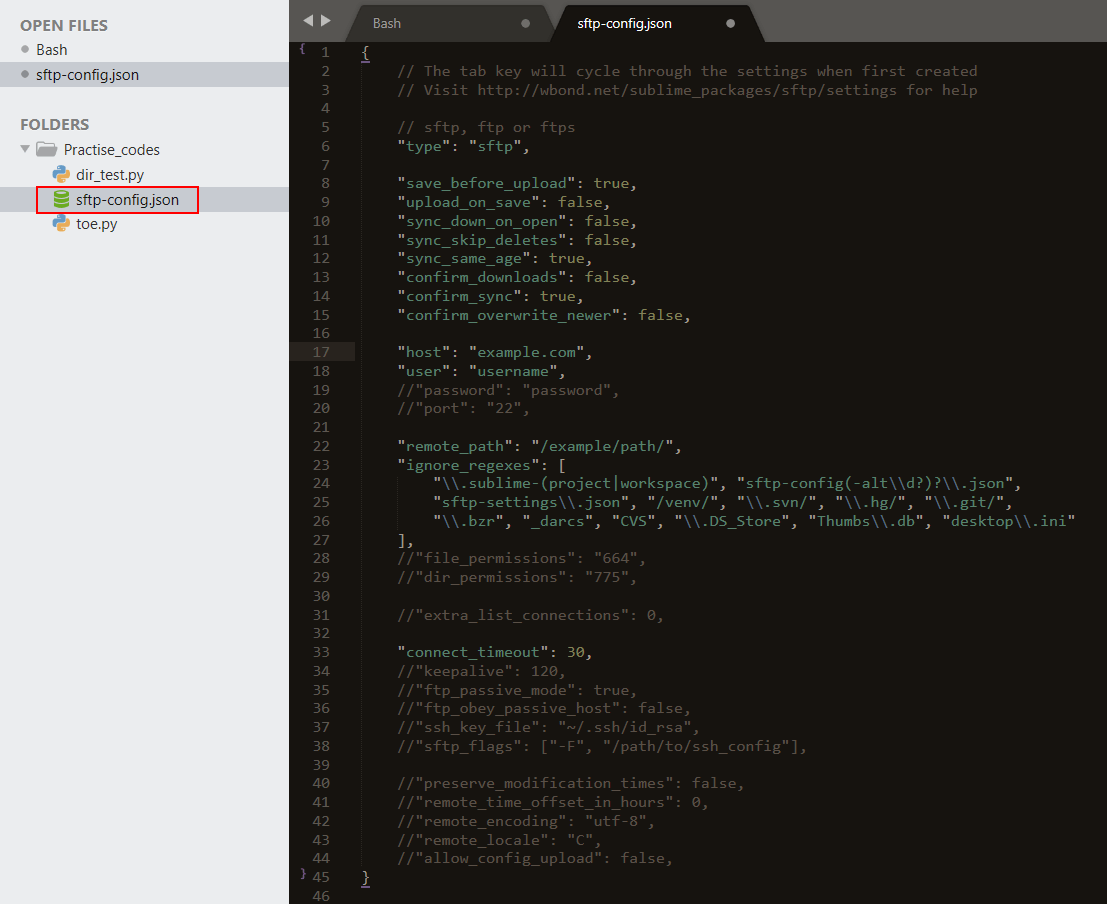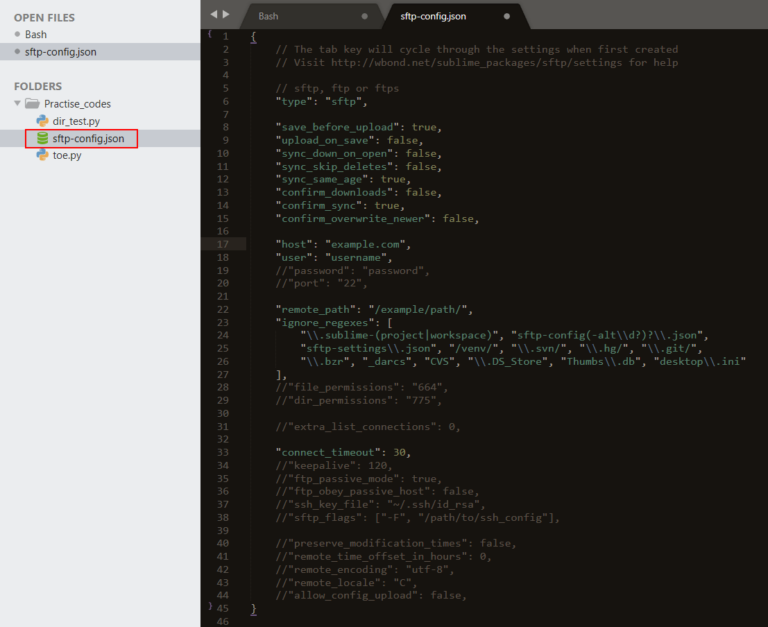

- #SUBLIME TEXT SFTP WHETE CAN I PUT PRIVATE KEY HOW TO#
- #SUBLIME TEXT SFTP WHETE CAN I PUT PRIVATE KEY UPDATE#
- #SUBLIME TEXT SFTP WHETE CAN I PUT PRIVATE KEY MAC#
👍 Set Up a Subdomain and Password-less Log-In on DreamHost I’ll call these out in context, so if this background isn’t interesting to you, you should have a good sense of what you can safely skip over. I’ll also, where appropriate, provide you with additional details I wish some of those sources would have provided. Where appropriate I’ll link to those sources. You’re more than welcome to copy everything else I’ve done here (with due credit, naturally), and I’ll link to your version in this note.Īnother note: I pulled from a bunch of other tutorials, guides, manuals, and specs to put these steps together. If you would like to adapt these to different contexts, like Windows, or a hosting provider that requires additional steps, please let me know.
#SUBLIME TEXT SFTP WHETE CAN I PUT PRIVATE KEY MAC#
Note: These instructions are Mac and DreamHost focused, but should apply with minor variation to other contexts. It is also run from a completely open repository on GitHub, so you can peek into any part of it for an in-the-wild view of how all this works. UX Methods is a Sanity-driven JAMStack site that uses all of these steps. Set up a subdomain & password-less login on DreamHostįor an example of what each of these steps look like, I’ll keep each of them in the context of.
#SUBLIME TEXT SFTP WHETE CAN I PUT PRIVATE KEY HOW TO#
I’m not going to lie: there are a lot of steps here.īut: if you take them one at a time and make sure things work correctly along the way (which I’ll show you how to do), you’ll have a set-up that takes care of a lot of the minutia for you-and have a better understanding of how you can wield the powers of SSH, shell permissions, and GitHub Actions (and its Secrets) for the greater good.


#SUBLIME TEXT SFTP WHETE CAN I PUT PRIVATE KEY UPDATE#

I’ll use DreamHost as an example hosting provider, but these are generic steps: you should be able to use any service that provides shell access. This article will show you how to deploy and self-host Sanity Studio on your own project subdomain using GitHub Actions. It also provides an equally remarkable open source content editor for structuring and creating that content: Sanity Studio. Sanity.io provides an amazingly flexible and adaptable content API for modern JAMStack web applications.


 0 kommentar(er)
0 kommentar(er)
